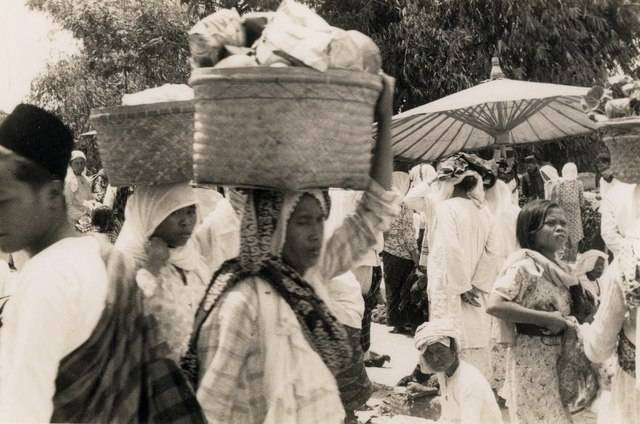Tentang KamiPedoman Media SiberKetentuan & Kebijakan PrivasiPanduan KomunitasPeringkat PenulisCara Menulis di kumparanInformasi Kerja SamaBantuanIklanKarir
2025 © PT Dynamo Media Network
Version 1.101.0
Konten dari Pengguna
The Suffering of Encik Lena
7 Oktober 2024 15:09 WIB
·
waktu baca 4 menitTulisan dari Yudhi Andoni tidak mewakili pandangan dari redaksi kumparan
ADVERTISEMENT
Encik Lena was a young Minangkabau woman who faced unfortunate circumstances after marrying a man named John Marsden. John Marsden was reportedly related to William Marsden, the Englishman who visited Minangkabau and wrote The History of Sumatra. Encik Lena, enchanted by John's fair skin and sharp features, was taken to Bengkulu, becoming a “nyai” (a concubine).

In letters discovered by E. Ulrich Kratz, we find fascinating insights into the life of this young Minangkabau woman in the late 18th century. Kratz unearthed six letters written by Encik Lena to her "husband" John, who had taken their daughters back to England.
ADVERTISEMENT
During the 17th and 18th centuries, the western coast of Sumatra was under British influence. Unlike the Dutch, the British, with their noble traditions, tended to control territories through alliances with local rulers rather than strict colonization. This allowed them to trade commodities and turn the region into a market for their manufactured goods. As a result, British influence expanded, fostering connections with Sumatran societies, including the Minangkabau people.
It is likely that Encik Lena met John Marsden during this period of British control, especially since the British had established power in Bengkulu, making the western Minangkabau coast a trade hub. English ships and people frequently passed through Minangkabau ports such as Indrapura, Cingkuak, and Tiku, making these areas familiar with European trade and settlers.
ADVERTISEMENT
By the 17th century (1685), Minangkabau coastal states had already developed strong economic ties with Britain. Historical records by English historians like John Bastin and Jeya Kathirithamby-Wells provide substantial information about Minangkabau society during this period, especially regarding those in the coastal regions of western Sumatra. Scholars Ricklefs and Voorhoeve (1977) also uncovered hundreds of Malay letters stored in the British Museum, dating from the late 18th century. These letters, exchanged between local rulers, included some from Minangkabau, with one notable correspondence being between Encik Lena and her husband, John Marsden.
One of the most valuable sources of information about Minangkabau women is housed in a British museum today. It comprises letters from a woman named Lena, who sent several letters to her husband, who had returned to England with their three daughters—Nona Kete', Nona Gadang, and Nona Nen.
ADVERTISEMENT
In one archived letter, stored in SOAS under the title MS 40320/2, No 77, dated November 7, 1784, Encik Lena wrote to Mr. Marsden from Pulau Perca. Here is an excerpt from her letter:
"1784, the Prophet's Hijrah on the 7th of November at 4 p.m. on a Sunday. This letter comes from Ence’ Lena, who lives in a garden in the middle of the field in Pulau Perca. May Allah deliver it to my master, Mr. Marsden, who is with my children Nona Kete’ and Nona Gadang in your country. I place my trust in Allah day and night, hoping for long life for my master and my two children in this world. Wa ba‘dahu, here is my gift for my master—a pair of umbrellas, a pair of pillows, a box of ambu, and a book of poems called Si Lindung Delima. People say it is the best poetry. I have also enclosed a package of Cempaka flowers, as I could not get any others due to the season. I hope this will reach you."
ADVERTISEMENT
Reading Encik Lena's letter paints a vivid picture of her deep sadness at being separated from her children, who had sailed far away to a foreign land. She writes to her "husband," who had cruelly abandoned her, far from her loved ones.
Why didn’t Mr. Marsden take Encik Lena to England to live together and be happy?
In those times, women were often seen as mere objects of reproduction, much like a banana tree, expected only to bear fruit. They had no rights, not even over the children they birthed in pain, often risking their lives in the process. Such was the fate of Encik Lena, married to a white man.
ADVERTISEMENT
Her life was no better than that of a "nyai" in Java during the same period. Her suffering mirrored that of Nyai Ontosoroh in Pramoedya Ananta Toer's novel This Earth of Mankind. These women, used as "sleeping companions" by their European masters, were nothing more than production machines fulfilling their master's desires. Sadly, we know little of Encik Lena's fate and that of her three daughters.

